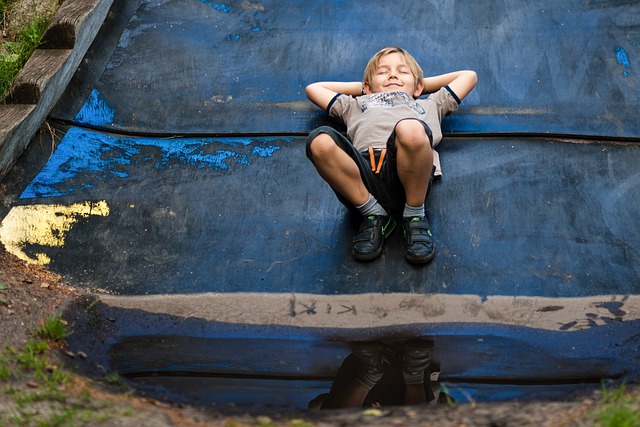At-risk children require specialized care to overcome challenges like poverty, neglect, and trauma. Safeguarding them involves implementing child protection laws, teaching safety education, and establishing family safety plans. Key aspects include online safety tips for kids, preventing child abuse through community involvement, and fostering digital literacy to enhance their security in a complex world. By combining robust child safety measures, education, and open communication, we can create protective environments, reduce child abuse risks, and ensure the well-being of at-risk children both online and offline.
Building resilient support systems is crucial in safeguarding at-risk children and preventing child abuse. This article explores comprehensive strategies to enhance child safety tips, focusing on understanding the unique needs of vulnerable youth. We delve into effective intervention methods, emphasizing the importance of child abuse prevention. Additionally, we discuss online safety for kids, equipping them with digital resilience amidst evolving digital landscapes. By implementing these measures, we contribute to fostering safe environments, ensuring child security, and adherence to essential child protection laws.
Understanding At-Risk Children and Their Unique Needs
At-risk children are those facing various challenges that may include poverty, neglect, abuse, or exposure to violence. Understanding their unique needs is paramount in building effective support systems. These children often require specialized care and attention due to potential trauma, which can impact their emotional well-being, behavior, and overall development. Child safety tips and protection from harm are critical aspects of their upbringing, encompassing both physical and psychological security.
Fostering safe environments involves a multifaceted approach, including implementing child protection laws, providing safety education for children, and encouraging family safety plans. Protecting children from harm extends to online safety, as digital spaces can pose risks such as cyberbullying or exposure to inappropriate content. Preventing child abuse and ensuring child security requires community involvement, early identification of at-risk individuals, and timely intervention through supportive programs that cater to their specific needs.
Child Safety Tips: Building a Protective Environment
Creating a protective environment is paramount when it comes to child safety tips and protecting children from harm. It involves a multifaceted approach that includes implementing child protection laws and ensuring online safety for kids. Safety education for children should be holistic, covering everything from recognizing potential dangers to practicing emergency protocols. This foundation empowers them to make informed decisions and stay secure in various settings.
Fostering safe environments requires active participation from parents, guardians, educators, and the community. Establishing family safety plans can serve as a powerful tool, outlining clear guidelines for responding to different scenarios, including child abuse prevention and child injury prevention. Regular communication about child safety tips and practicing these plans can significantly enhance children’s resilience, ensuring their ensuring child security in an increasingly complex world.
Preventing Child Abuse: Strategies for Intervention
Preventing Child Abuse requires a multi-faceted approach that combines robust child safety tips and protecting children from harm. Education plays a pivotal role in fostering awareness among parents, caregivers, and even children themselves about potential risks and the importance of online safety for kids. Implementing child protection laws and promoting safety education for children can significantly reduce the likelihood of abuse. Teaching children about personal boundaries, safe spaces, and trusted adults they can approach is crucial for their overall well-being.
Moreover, creating fostering safe environments involves a community effort. Neighborhood watch programs, local support groups, and school initiatives all contribute to a network of safety. Establishing family safety plans ensures that children have clear guidelines in case of emergencies or suspicious activities. By integrating these strategies, we can actively work towards ensuring child security and creating a more protective environment for at-risk children.
Online Safety for Kids: Equipping Them with Digital Resilience
In today’s digital era, online safety for kids is a paramount concern as they increasingly engage with the internet and social media. Equipping children with digital resilience involves teaching them about potential risks, such as cyberbullying, online predators, and inappropriate content. Implementing child safety tips like setting strong passwords, understanding privacy settings, and recognizing phishing attempts can significantly protect them from harm. Moreover, encouraging open communication between parents and children about their online activities fosters a safe environment and helps in early detection of any concerning behavior or potential child abuse prevention scenarios.
Safety education for children should also encompass broader child protection laws and family safety plans. Parents and caregivers play a crucial role in ensuring child security by establishing clear guidelines and boundaries regarding screen time, monitoring online interactions, and reporting any suspicious activities. By fostering a culture of digital literacy and open dialogue, we can enhance the resilience of at-risk children and contribute to their overall well-being, thus preventing child injury and promoting a secure environment both online and offline.
Building resilient support systems for at-risk children involves a multifaceted approach. By understanding their unique needs, implementing effective child safety tips, and prioritizing online safety, we can significantly prevent child abuse and ensure their protection. Equipping children with digital resilience, alongside fostering safe environments and family safety plans, is crucial in safeguarding our future. Remember that every effort to protect children from harm contributes to a safer and more nurturing world for them to thrive.
